In line with the Paris Agreement, the EU has set ambitious targets for effectively mitigating the damages of climate change. By 2030 all net emissions are to be reduced by 55%. For the transport and logistics sector a number of subgoals have been defined, including reducing greenhouse gas intensity by 14.5% (RED III). However, to this point, there is no clear action plan on how industry actors and companies can achieve these drastic emission reductions. The science-based target setting approach is gaining traction as it enables companies to set emission reduction targets that are in line with the goals of the Paris Agreement. We have taken a closer look at the tools and guidelines from the Science Based Targets initiative (SBTi) to outline how the approach works, why it is relevant for transport and logistics companies and how shipzero can guide the process of setting and achieving compliant targets.
What is science-based target setting and why is it relevant for transport and logistics?
The Science Based Targets initiative (SBTi) is a joint effort of several organizations including the Carbon Disclosure Project (CDP), the United Nations Global Compact (UNGC) and the World Resources Institute (WRI). The initiative aims encouraging and assisting companies to define and achieve ambitious, science-based climate targets which are aligned with the latest climate science to ensure they contribute to global efforts to limit global warming. Science-based target setting provides a framework for establishing emission reduction targets in line with the level of decarbonization required to keep global temperature increases well below 2°C above pre-industrial levels.
The SBTi provides sector-specific guidelines and tools to help organizations set appropriate and feasible targets based on their specific circumstances. For the transport sector, it offers guidelines and calculation tools for the most used transport modes (road, rail, maritime, aviation) to determine which GHG emissions reductions need to be reached in order to align with the 1.5°C objective of the Paris Agreement.
The EU has set ambitious emission reduction and sustainability reporting targets for the transport and logistics sector as consolidated in policy frameworks such as the Renewable Energy Directive (RED III), the EU Emissions Trading System II, and the Corporate Sustainability Reporting Directive (CSRD). Defining targets that align with these frameworks has a number of advantages for shippers, carriers and forwarders:
- Reducing the cost burden. The EU Emissions Trading System (ETS) II is likely to contribute significantly to price increases in the future, with costs of up to 200€ per ton CO2 being anticipated. The EU ETS II has already come into effect within the aviation and maritime industry, making it obligatory to submit emissions data and compensate costs accordingly (maritime starts compensating in 2025). Road transport will follow in 2027, with various measures coming into force to compensate for produced emissions in addition to the CO2 toll for trucks which has already been implemented.
- Competitive advantage. Science-based target setting helps with defining a benchmark and demonstrating progress. It can provide the basis for defining a substantial plan of action. This is beneficial during tender processes and for acquiring funding which can contribute to gaining a competitive advantage.
- Being ahead of regulations. Mandatory reporting obligations as stated in the Corporate Sustainability Reporting Directive (CSRD) or the upcoming CountEmissionsEU initiative require insights into current emission values, reduction targets and decarbonization measures. Science-based target setting and an emissions management platform such as shipzero help to prepare for reporting requirements in a compliant way.
How does science-based target setting work?
The approach and tools by the Science Based Targets initiative (SBTi) use external data and knowledge sources for defining sector specific emission reduction targets. Emission factors, climate scenarios and the carbon sector budgets are obtained from the International Energy Agency (IEA) and the Panel on Climate Change (IPCC).
The targets can be created by any company with the help of the openly available Excel calculation tools and support materials which are provided by the SBTi for different transport classes and sectors. It is important to note, that the SBTi is not aiming to consult and recommend ways to reduce emissions. Instead, it provides guidance and certification for the emission savings a company should achieve to be in line with the different climate scenarios.
The process follows a 5-step approach:
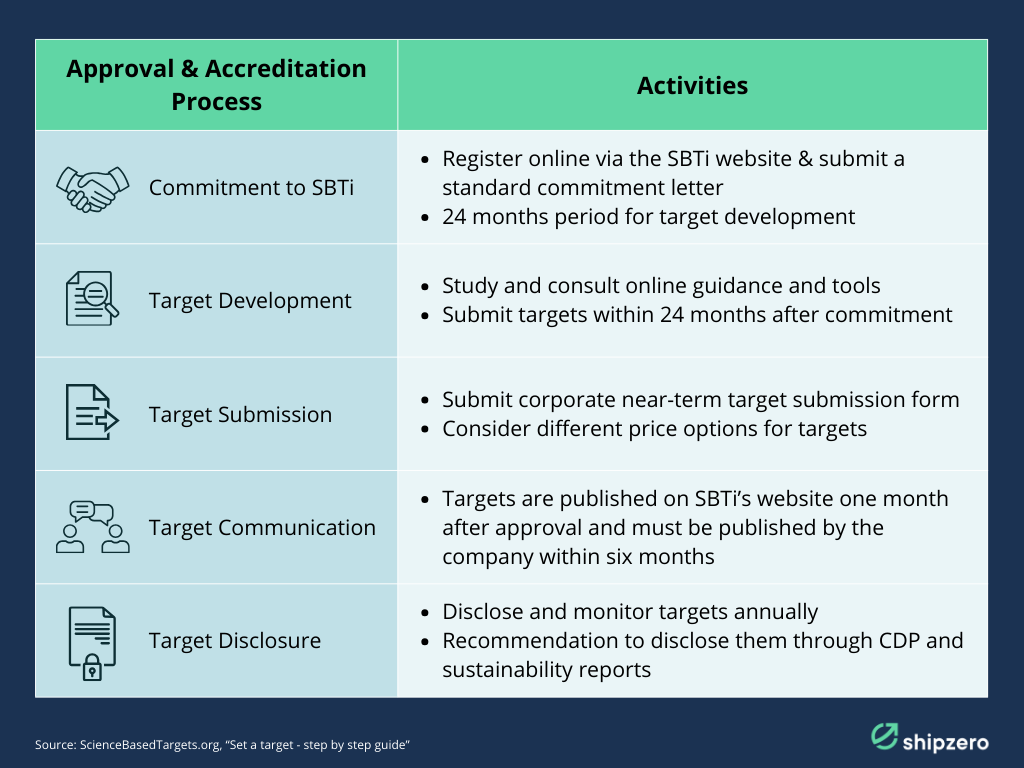
The methodology and tools distinguish between two climate classifications and scenarios:
- Reduction targets that fall under a company’s scope 1 and scope 2 emissions must meet at least the 1.5°C scenario.
- Reduction targets that fall under scope 3 emissions must align at least with the climate scenario of well below 2°C (B2DS).
Scope 1 and 2 targets are stricter than scope 3 targets as companies have more control over them and thus have a direct reduction potential. Targets should be formulated in a “near-term” (timeframe of five to ten years) or in a “long-term” (target reached by 2050) scenario to set a clear scope of when targets should be met.
Defining measurable targets using the science-based target setting tool
To start setting targets using the science-based target setting tool, some data input and classification is required. Each user of the tool is asked to specify the exact mode of transport, including the vehicle type for road transport or the vessel type for maritime transport. A baseline year must be selected which will be used as a reference point for the reduction efforts, as well as a target year indicating when the targets are to be achieved. Information such as transport activity and respective GHG emissions must be available for the baseline year. In the target-setting tool, emissions are then split into Well-to-Tank (WTT) and Tank-to-Wheel (TTW) components. Figure 2 provides an overview of the needed input parameters, key outputs as well as factors considered and not considered (boundaries) in the calculation.
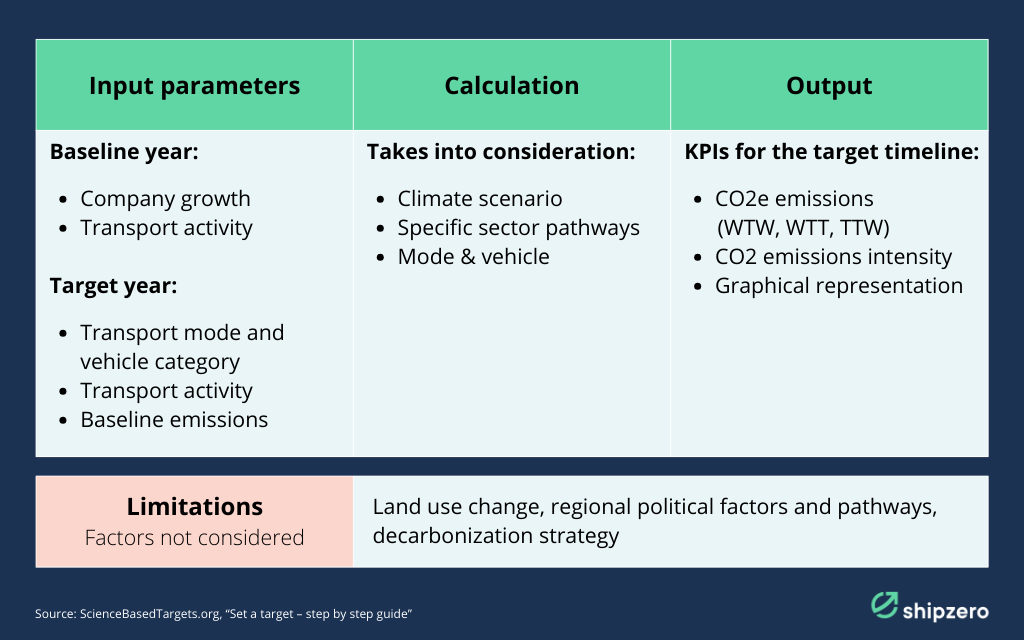
Finally, the tool calculates the anticipated transport activity in the target year based on average sector or customized growth rates. Once all required data has been added, the tool determines the GHG emission targets, based on the available sectoral global carbon budget. It then provides three main outputs based on the two climate scenarios (1.5°C for scope 1 and 2; well-below 2°C for scope 3 GHG emissions).

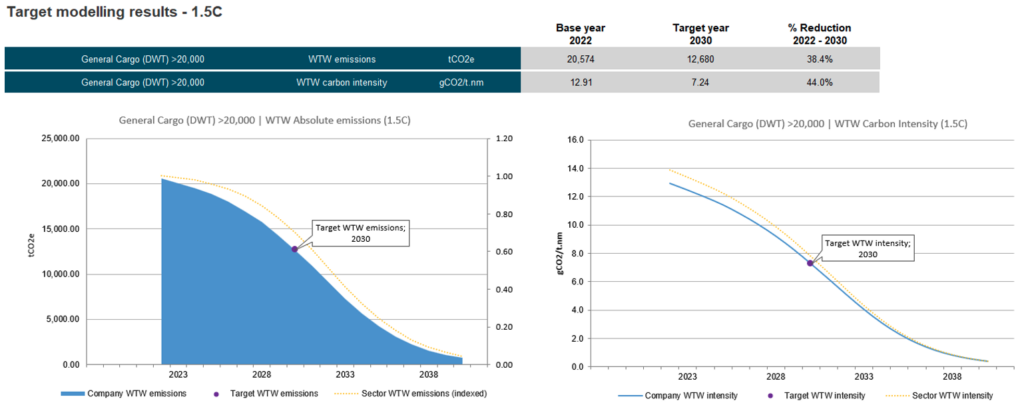
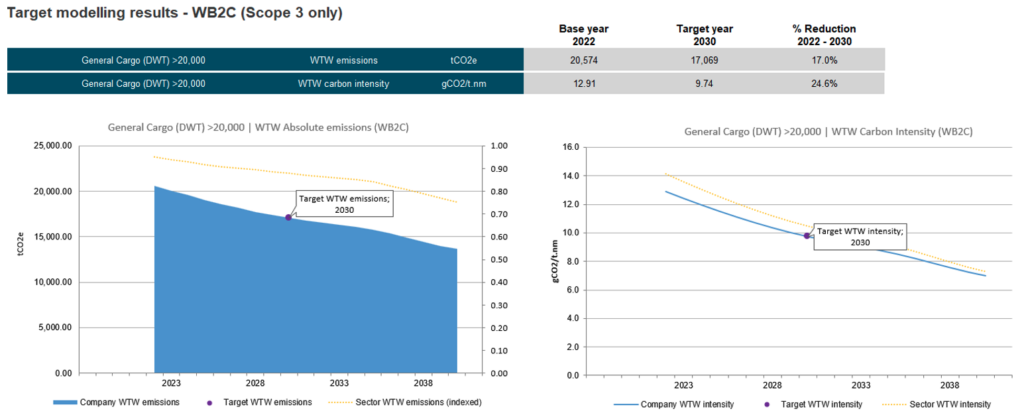
How to ensure a precise database for setting sustainability targets
The science-based target setting tool is useful for defining measurable sustainability goals. However, there are some preconditions that must be met to use the tool effectively and define measures that are realistic and compliant. For example, the defined target is only as accurate as the data available for the set baseline year. If a transport and logistics company does not yet have sufficient insights into its yearly transport activity and the resulting GHG emissions, the baseline on which all calculations are based on might not be correct, leading to a ripple effect of inaccuracies. Furthermore, while defining tangible decarbonization targets is a great opportunity and starting point, achieving these targets by effectively lowering transport emissions is a whole new ballgame.
An emissions management platform like shipzero can help to define the baseline emissions with the required granularity as well as considering the relevant Transport Operational Categories (TOC) and methodological standards (ISO 14083, GHG Protocol). This data can be used as a valid entry point for defining targets using the SBTi model. Once targets have been defined, shipzero enables companies to determine customized decarbonization pathways, taking latest insights into promising industry developments, regulatory boundaries or incentives and the company’s transport mix into account. By providing sensitivity analytics on measures such as low and zero-emission vehicles, changing modes of transport, using alternative fuels, improving transport operational efficiency or a combination of the above, shipzero supports companies in selecting the most realistic and effective scenario for the cost-effort-impact.
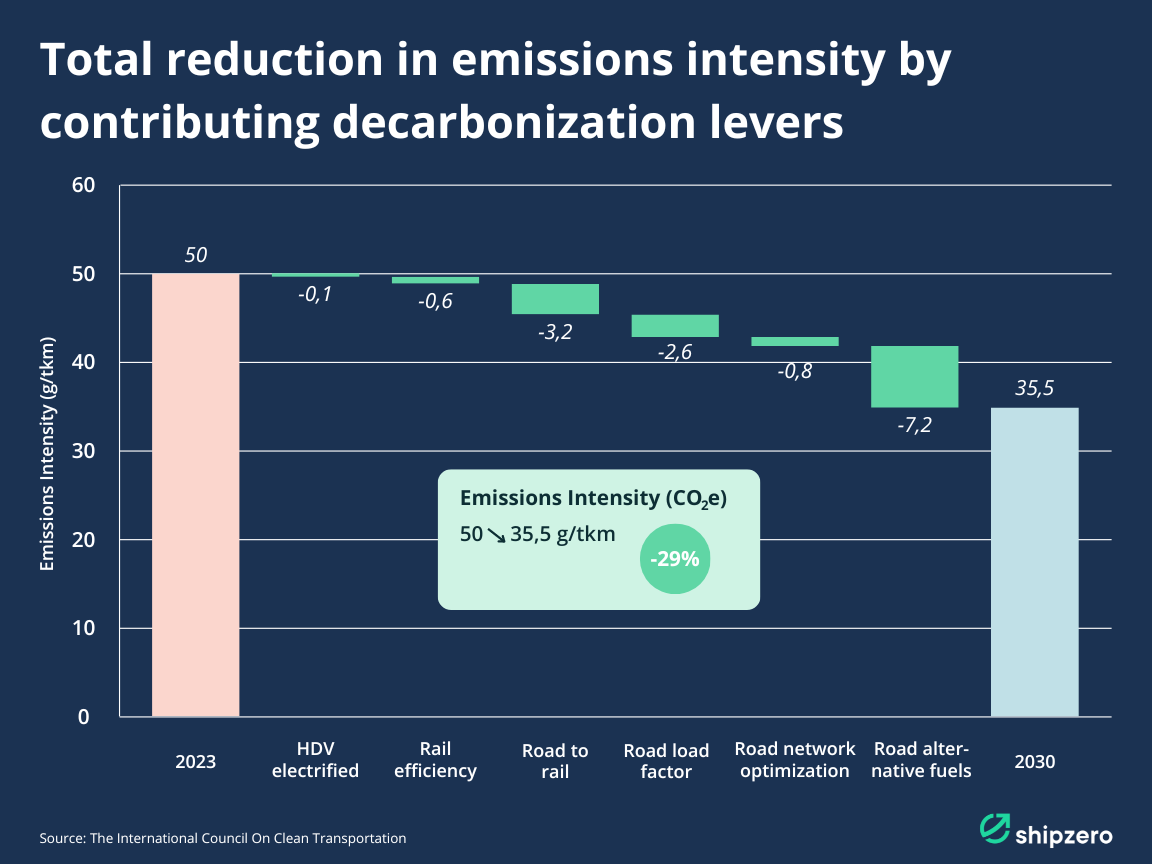
Conclusion
Science-based target setting is a valuable tool for defining tangible decarbonization goals once a certain data base and degree of CO2 transparency has been established. It is questionable whether science-based target setting is suitable as a very first step in a company’s decarbonization journey as targets might be calculated based on unrealistic average values. In general, a combination of both seems most useful for steering transport and logistics companies towards low-emission operations: an emissions management platform for calculating emissions compliantly and identifying decarbonization measures, and guidelines like those from The Science Based Targets initiative for defining tangible long-term goals that are in line with global climate agreements.
